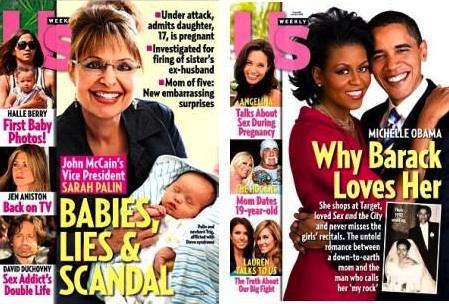 Surely anyone who follows American politics, at least with serious intent, knows something about the "pew gap."
Surely anyone who follows American politics, at least with serious intent, knows something about the "pew gap."
Then again, maybe not. You see, people often use this term incorrectly, claiming that religious people vote for Republicans and non-religious people vote for Democrats. That is not what the term means.
Highly secular voters are more likely to vote for Democrats, that is true. But so are religious believers who are part of traditions that are doctrinally and culturally liberal -- which makes them great political coalition members with secularists, when it comes to moral and social issues. The problem, in terms of statistics, is that liberal religious groups tend to be smaller and, in recent decades, their numbers have been in sharp decline.
So what is the "pew gap"? The essential fact, in several decades with of elections, is that the more voters attend worship services -- especially if they attend weekly or more than once a week -- the more likely these voters are to vote for candidates who lean toward conservative positions on moral and cultural issues. Most, but not all, candidates of this ilk are Republicans, which means that commentators often say that the "pew gap" favors the GOP.
I have often wondered what would happen if pollsters applied this logic -- asking specific questions about levels of religious practice and worship -- to research on other topics.
Take, for example, the following numbers from the Gallup organization about Americans and the press. If you are a working journalist, or someone who cares about public discourse in American public life, you will want to sit down to read this.
Americans' distrust in the media hit a new high this year, with 60% saying they have little or no trust in the mass media to report the news fully, accurately, and fairly. Distrust is up from the past few years, when Americans were already more negative about the media than they had been in years prior to 2004.
Trend since 1997: In general, how much trust and confidence do you have in the mass media -- such as newspapers, TV, and radio -- when it comes to reporting the news fully, accurately, and fairly -- a great deal, a fair amount, not very much, or none at all?
The record distrust in the media, based on a survey conducted Sept. 6-9, 2012, also means that negativity toward the media is at an all-time high for a presidential election year. This reflects the continuation of a pattern in which negativity increases every election year compared with the year prior. The current gap between negative and positive views -- 20 percentage points -- is by far the highest Gallup has recorded since it began regularly asking the question in the 1990s. Trust in the media was much higher, and more positive than negative, in the years prior to 2004 -- as high as 72% when Gallup asked this question three times in the 1970s.
As you would expect, there is a political component to this anger in an age in which (hello Bill Keller!) more and more mainstream journalists are openly saying that they are biased when it comes to coverage of certain political issues, such as those linked to morality and culture. This would mean that there are lots of non-libertarian Republicans who are furious with the mainstream press, as well as a few old-guard conservative Democrats (think blue-collar voters in the Midwest and Sunbelt).
This article from Gallup interprets this anger in a strictly political manner.
Surprise, surprise.
This year's decline in media trust is driven by independents and Republicans. The 31% and 26%, respectively, who express a great deal or fair amount of trust are record lows and are down significantly from last year. Republicans' level of trust this year is similar to what they expressed in the fall of 2008, implying that they are especially critical of election coverage.
Independents are sharply more negative compared with 2008, suggesting the group that is most closely divided between President Barack Obama and Republican Mitt Romney is quite dissatisfied with its ability to get fair and accurate news coverage of this election.
More broadly, Republicans continue to express the least trust in the media, while Democrats express the most.
So here is my question: What would happen if pollsters, in addition to asking the necessary questions about political affiliation, also inserted one or two questions about religious beliefs and practice in polls focusing on public attitudes toward the news and the journalists who produce it?
Discuss.
